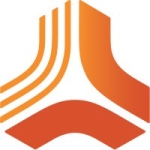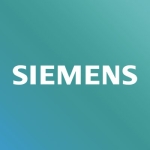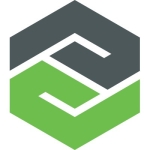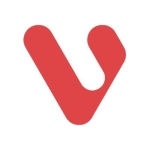
Principal Consultant at a tech services company with 11-50 employees
Efficient audit processes save costs while complex UI and slow support need improvement
Pros and Cons
- "IBM DOORS Next is known for its heavy-duty capability, which is especially beneficial in heavily regulated environments facing frequent audits."
What is our primary use case?
I recommend IBM DOORS Next for industries with heavy regulation, such as military products, aerospace, aviation, and space technology companies. It is not ideal for banking or the call device industry, where a less complex solution is preferable.
What is most valuable?
IBM DOORS Next is known for its heavy-duty capability, which is especially beneficial in heavily regulated environments facing frequent audits. It allows companies to manage requirements efficiently and generate reports promptly, leading to significant savings during audit processes. The ready-made plugins and APIs for integration with other tools like Jira and Confluence add value.
What needs improvement?
There is a need for improvement in user experience, as the UI is too complex and outdated. Updates should be more frequent to ensure security and functionality, especially in addressing vulnerabilities. The lack of built-in AI functionalities is noted, with existing solutions not officially supported.
How are customer service and support?
The technical support is said to be slow, with my subjective experience of it taking up to five hours.
Buyer's Guide
IBM DOORS Next
December 2025
Learn what your peers think about IBM DOORS Next. Get advice and tips from experienced pros sharing their opinions. Updated: December 2025.
879,711 professionals have used our research since 2012.
How would you rate customer service and support?
Neutral
What was our ROI?
IBM DOORS Next can lead to cost savings for companies that are audited frequently, as it streamlines the reporting process.
What's my experience with pricing, setup cost, and licensing?
The pricing is considered unreasonable, and there is speculation that IBM may not be putting much effort into further development, possibly treating it as a cash cow.
Which other solutions did I evaluate?
I view Jama as a better alternative for industries that do not require the heavy-duty functionalities of IBM DOORS Next.
What other advice do I have?
As an independent consultant, I rate IBM DOORS Next overall as a seven out of ten considering its value, price, and complexity. I have an expectation for more frequent updates and AI features for improvement. My overall rating for the solution is 7 out of 10.
Disclosure: My company does not have a business relationship with this vendor other than being a customer.
Senior Manager – Development, PD, Data Virtulization at a computer software company with 501-1,000 employees
Has the capability to extend or add extensions to the data model
Pros and Cons
- "There are many good features with DOORS. The solution has a concept of streams and baselines, as well as a concept of components. A component is a subproject inside a project."
- "There is room for improvement in the APIs that they have exposed for integration."
What is our primary use case?
IBM Rational DOORS Next Generation is the master for capturing requirements. The solution does have other use cases, however, most of our customers are using DOORS as a requirement capturing software. High-level requirements or stakeholder requirements are captured mainly in DOORS.
What is most valuable?
There are many good features with DOORS. The solution has a concept of streams and baselines, as well as a concept of components. A component is a subproject inside a project.
IBM Rational DOORS Next Generation has the capability to extend or add extensions to the data model.
Another valuable feature would be the ease to add custom attributes and new objects with DOORS.
What needs improvement?
The user interface of IBM Rational DOORS Next Generation needs to be improved, there is a lot of scope with this. Even though there have been improvements from versions five, six and seven, the UI still has a lot of bugs.
There is room for improvement in the APIs that they have exposed for integration. The solution relies on OSLC for integration APIs, but those APIs do not support all the capabilities.
For how long have I used the solution?
I have been working with IBM Rational DOORS Next Generation for five years.
What do I think about the stability of the solution?
The solution is not very stable. The performance could improve. We generate a lot of data, causing DOORS to become sluggish with some lags in the software. The earlier version of DOORS Classic handled a large amount of data better.
What do I think about the scalability of the solution?
IBM Rational DOORS Next Generation can scale up and down, but there is a lot of scope for improvement required in this regard.
How are customer service and support?
Personally, I have not interacted with IBM Rational DOORS' customer service and support. We have our own support team.
How was the initial setup?
The initial setup is medium in complexity. It is not straightforward. The admin console itself is a little tricky to understand within the whole licensing model and user access control.
I would rate the initial setup a four point five out of five.
Which other solutions did I evaluate?
From what I know of Jama Connect, Micro Focus, and Inflectra, DOORS Next Generation is the number one requirement management software. There are other product options, but I believe that DOORS is the best offer out there.
What other advice do I have?
Overall, I would rate IBM Rational DOORS Next Generation an eight out of 10.
Disclosure: My company has a business relationship with this vendor other than being a customer. Integrator
Buyer's Guide
IBM DOORS Next
December 2025
Learn what your peers think about IBM DOORS Next. Get advice and tips from experienced pros sharing their opinions. Updated: December 2025.
879,711 professionals have used our research since 2012.
CEO at a manufacturing company with 10,001+ employees
Good integration capabilities, with good stability and an easy initial set up
Pros and Cons
- "It's web-based, so you don't have anything to install."
- "When you are in Jira or Confluence, you have some freedom in how you type in text. That's also a weakness of Confluence, however, as it opens the doors to sloppy work. In DOS Next Generation, the text is very rigorous, but it might be difficult for people who don't have the discipline. Having a way to quickly enter requirements could help. It might already be in there, but I don't know. I don't have enough experience with the tool yet."
What is our primary use case?
We primarily use the solution for system engineering.
Typically, we receive a user requirement to produce or engineer specific equipment. From there, we derive requirements, system and sub-system specifications, and also design or create a test plan with a rationale quality manager, which is in the same suite as DOS next generation. There's full coverage provided, from building requirements to testing.
What is most valuable?
I'm impressed by the tool because the tool comes from DOS, and DOS was the legacy tool. The legacy tool had some problems and actually this version resolves a lot of those.
It's web-based, so you don't have anything to install.
One of the most advanced aspects of the tool is its integration capabilities.
What needs improvement?
The tool is quite new, so it may not be a mature product, but I haven't spent enough time with it to have a list of improvements that it needs.
When you are in JIRA or Confluence, you have some freedom in how you type in the text. That's also a weakness of Confluence, however, as it opens the doors to sloppy work. In DOS Next Generation, the text is very rigorous, but it might be difficult for people who don't have the discipline. Having a way to quickly enter requirements could help. It might already be in there, but I don't know. I don't have enough experience with the tool yet.
For how long have I used the solution?
I've been using the solution for two years but not on a daily basis.
What do I think about the stability of the solution?
The solution is very stable. It's one of the product's strengths. It's very powerful.
What do I think about the scalability of the solution?
The solution is based on an application server, which is scalable, therefore the product itself is scalable.
How are customer service and technical support?
I'd rate technical support eight out of ten. Usually, you will get a response in one day, and at maximum within two or three days.
How was the initial setup?
The initial setup is very straightforward. There is a wizard that installs the requirements and takes care of everything for you. The set up is really simple. However, if you want to deploy it to an enterprise, it could be tricky.
What about the implementation team?
I help my clients with the installation. However, there is the application server and the database server, and all those parts need expertise, which I don't have.
I know enough about the solution to handle most of it and IBM gives scripts so that you can install it easily. Also, IBM has support on offer when a customer buys a license. If the client struggles with part of the installation, maintenance and support can help him with the installation as well. I'm only there to support my customer and ask the right questions.
What's my experience with pricing, setup cost, and licensing?
Users can buy a three-year license for about 12,000 Euros.
What other advice do I have?
I'm selling the solution to customers, as well as installing it, and configuring it. Currently, I'm using it for a customer. We use the on-premises deployment model. We're also IBM partners.
I'd recommend the solution. It's a quality product. It's not cheap, but if you want quality you have to pay for it.
I'd rate the solution eight out of ten.
Disclosure: My company does not have a business relationship with this vendor other than being a customer.
Software Engineering Consultant at a manufacturing company with 1,001-5,000 employees
A stable product with good baselines and links features
Pros and Cons
- "The most valuable features are the baselines and links."
- "It offers a bad user experience and the usability is poor."
What is our primary use case?
I am a consultant and this is one of the products that I use for my clients. They use DOORS Next Generation mainly for requirements management, in conjunction with other tools such as RTC for change management, and RQM for quality management. Together, these are all part of the software life cycle.
What is most valuable?
The most valuable features are the baselines and links.
What needs improvement?
It offers a bad user experience and the usability is poor. A lot of engineers do not use it, primarily for two reasons. First, it is very abstract and hard to understand. Second, the operation seems to be very complex. For example, the setting is distributed in a lot of section and it is not easy to find where to configure it.
The baseline is not as good as it is in DOORS because you can't create a baseline for a module. Rather, you can only create on for the project.
The speed of technical support needs to be improved.
The DOORS Web Access (DWA) is not stable.
For how long have I used the solution?
I have been using this product for about four and a half years.
What do I think about the stability of the solution?
This is a stable product.
What do I think about the scalability of the solution?
This solution is scalable.
How are customer service and technical support?
IBM has a support team in Australia that I contact when I encounter a problem from the end-users and I cannot solve it. I begin by submitting the issue to the technical support team through the website.
The problem with technical support is that they are very slow, sometimes taking between two and three months to resolve an issue.
How was the initial setup?
The configuration involves customizing attributes and the deployment is not easy.
What's my experience with pricing, setup cost, and licensing?
The price of this solution is very high, and it increases year after year.
Which other solutions did I evaluate?
I did not personally use another similar solution prior to DOORS Next Generation. However, another person in the company did use a different requirements management product.
What other advice do I have?
My advice to anybody who is considering this solution is to adopt it.
I would rate this solution an eight out of ten.
Which deployment model are you using for this solution?
On-premises
Disclosure: My company has a business relationship with this vendor other than being a customer. partner
CIO at a comms service provider with 501-1,000 employees
Simplified our requirement process, helping with requirement creation and reuse
Pros and Cons
- "The most valuable features are the versioning of requirements and the possibility to reuse them."
- "When you are not working on it every day it is not very intuitive."
What is our primary use case?
The primary use case of this solution and tool is to completely manage and also reuse requirements. We produce many different products which have a lot of reused requirements (for example for protocols etc.). Before we were writing big documents describing requirements and many parts of such requirement documents overlapped. We loose a lot of time reading such documents (R&D, VV, product management) so we want to make improvements.
We use IBM Rational Doors tightly integrated with Quality Management for testing requirements- WIth such combination we slightly improve our product development process and support for this process
How has it helped my organization?
We were producing huge documents where we describe our requirements using The problem was that while we were producing many different products with similar protocols, the documents consisted of more than one hundred pages with a lot of syncs that overlapped with other documents for similar products. This was difficult to manage, as people hated having to read all of the pages.
It is much easier because we put all requirements in IBM Rational Doors, and from this, we get the specification that can be used with different products. We don't have to write these huge documents with functional specifications anymore. Everything is well organized and easy to find in this tool.
What is most valuable?
The most valuable features are the versioning of requirements and the possibility to reuse them. There is also a good chain when the high-level requirement goes into deep technical requirements. The ability to use different diagrams and graphical presentation is very useful.
What needs improvement?
An area that could be improved is user interface which is not very intuitive. Product is also Java based and we have a lot of issues with performance (at beginning). Resolution of all problems takes a lot of time. ALso upgrades of product are from our experience very painful.
For how long have I used the solution?
I have been using this solution for five to six years.
What do I think about the stability of the solution?
In the beginning, we had several problems with the stability of this solution. This was because we had to setup up a WebSphere and Java application server. We had some difficulty setting it up properly. This created severe problems with performance and stability.
It takes a long time to make this product to work properly, specially after last upgrade.
Now the stability of product is ok. It's fine.
What do I think about the scalability of the solution?
At the moment we do not have a lot of data. According to set up we should not have any issues with scalability and we don't expect that we will, as we have been using this solution for five years now and we have many requirements already in place with a lot of relationships and dependencies between requirements.
We have about one hundred and fifty users using this application.
There are no plans to increase usage at this time. We are working on a completely new approach to the development process and the product management process.
This product is supporting our development and product management processes. I think that all of the mandatory features are included. We look at the functionalities that are needed and they were included in this solution and we use them.
How are customer service and technical support?
In the beginning, we had to contact the technical support many times.
Generally, when we have serious issues, it gets escalated to a higher level.
I have had good experience with the support technicians, as they wer very knowledgeable and were able to resolve the issues.
The only problem would be is that it can take a lot of time that issue is resolved depending on the nature of issue.
Which solution did I use previously and why did I switch?
We use Microsoft Office tools just for writing documents and Excel for some additional information. We don't use solution supported by serious information systems.
We were not replacing any solution or tool. Instead, we are implementing a new solution to be more productive, faster, and have better visibility of what is going on with these requirements or what is related to them.
How was the initial setup?
The initial setup was quite complex. Due to the complexity of the setup, we required the assistance of the IBM partners.
The configuration was complex and it took a lot of time to configure and install properly. This was the largest problem we had with this solution.
The deployment method we used was on-premises and took one to two months, but we were resolving some problems four months after the installation.
We were working with the external partners from IBM and we had two people from the IT department on the project. For the maintenance, we have one employee working full-time, half of the time working on maintaining the system.
For new features and the implementation of the upgrades, it is project-based and we would go through the IBM external partners.
When everything works well it is just to maintain.
What about the implementation team?
The implementation and configuration were assisted by the IBM partners . We had two IBM partners assist us; the second was very helpful and resolved most of our issues quickly (this was not a case with first IBM partner).
We had several issues after implementation and took four months to stabilize the products and it was not fun. I would recommend not to do the implementation by yourself. When there are issues the product is quite complex.Architecture is complex and not easy to set up properly.
What was our ROI?
We do not calculate it with ROI figures. We are usually measuring it with payback. The payback period was between three and four years.
What's my experience with pricing, setup cost, and licensing?
We have floating licenses. Licensing costs are yearly, mainly for maintenance.
The cost of maintenance is between €25,000 to €30,000 ($27,500 to $33,000 USD) and there are no additional fees.
We get support and all of the latest versions. However, there are some product upgrades which would be an additional cost. I strongly recommend to make upgrades together with IBM or IBM partners - from my experience upgrade is usually very complex.
Which other solutions did I evaluate?
We had considered other options and vendors, We decided for IBM tools because they have full stack of solutions to build them together, supported by many integrations in one ecosystem (FocalPoint, Rational QUality Manager,Radional Doors NG) and we were also using some other solutions from IBM. We want to have imeplemented a good stack from one vendor, because integrations and support is in such case usually much better. ALso from perspective of market position IBM was very high ranked at that time.
What other advice do I have?
I would suggest finding someone, who already has experience with implementing this solution, to help you with the implementation. It will be easier and you will have fewer problems, as product and configuration is quite complex. What we have learned from our experience is that upgrades should be done with the help of the external IBM partners of IBM services team. You can think also to have solution in cloud, but from price perspective the price in cloud is not attractive, specially in case as our when we use floating licences.
The user interface could be improved, it is quite heavy and not-intuituve.The interface is quite complex, as it takes a lot of clicks to perform some actions.
The architecture design of this product is from my perspective too complex. The design is based on Java, Websphere. Once there are issues, they can't be resolved by the customer easily and usually require help from support. It's great to have the support but nice to have the option not to need it every time and for every problem.
They should change the design and model to be more distributed. I personally don't like heavy monolithic application.
I would rate this solution an eight out of ten.
Disclosure: My company does not have a business relationship with this vendor other than being a customer.
Requirements Engineer at a manufacturing company with 10,001+ employees
There are limits to the number of artifacts a server can handle
Pros and Cons
- "The "Link by Attribute" feature is useful for making links without needing to use the web interface manually."
- "I have come to the conclusion that if you are considering migrating from DOORS to DNG, don't! Instead of spending 100's to 1000's of hours doing migrations, invest those hours in a DXL programmer to make DOORS do what it isn't doing for you now."
- "Be very careful how you load your DNG server. There are limits to the number of artifacts a server can handle."
- "As a web tool, DNG can be difficult to use if the server is loaded or your network connection to it is saturated."
What is our primary use case?
Requirements management as part of the Jazz Platform CLM integrated tool chain. The only reason to use DNG is as a part of the IBM tool chain.
How has it helped my organization?
Requirements management is a key activity in any software development process, especially so in safety-conscious industries, i.e., where incorrect software can kill you, e.g., automotive, aviation, medical devices, etc. In these industries DOORS Next Generation (any requirements management tool) shouldn’t be thought of as an improvement, but more as a key tool for doing your job, like a compiler or defect tracker.
What is most valuable?
As a web tool, DNG can be difficult to use if the server is loaded or your network connection to it is saturated. Therefore, the export/import feature is important, so you can make changes offline.
The "Link by Attribute" feature is useful for making links without needing to use the web interface manually.
The reporting tool (Jazz Reporting Service) can be very powerful for producing reports and charts, but it must be admined carefully to be useful.
What needs improvement?
The problems with DNG are legion and make using the tool very frustrating.
For how long have I used the solution?
One to three years.
What do I think about the scalability of the solution?
Yes, be very careful how you load your DNG server. There are limits to the number of artifacts a server can handle.
Which solution did I use previously and why did I switch?
Many organizations come to DNG after using DOORS. The IBM Jazz Platform CLM integrated tool chain is a sexy idea that provides, in theory, the holy grail: planning, defect/change management, requirements, and tests, all linking together.
How was the initial setup?
I do not do back-end administration of DNG, so I cannot comment on this except to say, given the amount of problems I have encountered, it must be a complex and error-prone.
What's my experience with pricing, setup cost, and licensing?
You are going to need a beefy server and a fat network pipe to it in order to make DNG and its companion tools work well for users.
What other advice do I have?
Migrating from DOORS and a constellation of other tools to the IBM Jazz Platform CLM integrated tool chain seems like a no-brainer at first. I do not know a lot about the other tools in that chain, but I can tell you DNG is the weak link.
I have come to the conclusion that if you are considering migrating from DOORS to DNG, don't! Instead of spending 100s to 1000s of hours doing migrations, invest those hours in a DXL programmer to make DOORS do what it isn't doing for you now.
Disclosure: My company does not have a business relationship with this vendor other than being a customer.
Marketing and Sales at a computer software company with 51-200 employees
It provides us with collaboration between several development teams such as design, development, and testing, although its stability could use improvement.
What is most valuable?
It provides us with integration throughout the complete product development process.
How has it helped my organization?
With it, we have easy collaboration between several development teams such as design, development, and testing.
What needs improvement?
- Import/export
- Stability
For how long have I used the solution?
I've used it for three years.
What was my experience with deployment of the solution?
No issues encountered.
What do I think about the stability of the solution?
There were some issues.
What do I think about the scalability of the solution?
No issues encountered.
Which solution did I use previously and why did I switch?
No previous solution was used.
How was the initial setup?
It was easy.
What about the implementation team?
We did it in-house.
What was our ROI?
Project realization has been carried out much faster.
What's my experience with pricing, setup cost, and licensing?
Use workgroup licenses for smaller environments.
Which other solutions did I evaluate?
No because this is the defacto standard in the automotive industry.
What other advice do I have?
Plan the training and usage properly.
Disclosure: My company has a business relationship with this vendor other than being a customer. We are a business partner of IBM.
Sr. Solution Architect at a tech services company with 51-200 employees
It gives our team better visibility across life-cycle artifacts, but deploying the RRC add-in for browsers can be a real headache.
What is most valuable?
Support for text, rich text and graphical requirement documentation. Extensive traceability and analysis through artifact linking across requirements and other artifacts within the Jazz CLM solutions.
How has it helped my organization?
It gives us better transparency of required changes and better visibility for the team across life-cycle artifacts.
What needs improvement?
There's ongoing stability issues with the browser UI. Some cases of illogical restrictions on artifact views, RFEs, have been submitted to the vendor and are currently pending review by the development team.
For how long have I used the solution?
I've used it for five years.
What was my experience with deployment of the solution?
In certain instances of restrictive IT networks, with lack of elevated permissions for most users, deploying the RRC add-in for browsers can be a real headache, requiring multiple cycles of un-installing and reinstalling.
What do I think about the stability of the solution?
No issues encountered.
What do I think about the scalability of the solution?
No issues encountered.
How are customer service and technical support?
Customer Service:
Very good customer support. Timely responses and updates.
Technical Support:Very good technical support. Timely responses and updates.
Which solution did I use previously and why did I switch?
We used Legacy IBM Rational requirements management solution, RequisitePro.
How was the initial setup?
It's slightly more complex than a Tomcat configuration due to a WAS and multi-server Jazz application configuration.
What about the implementation team?
It was done in-house.
What's my experience with pricing, setup cost, and licensing?
Definitely not the cheapest solution when it comes to licensing and at times confusing becuase of the various types offered (meaning what features and capabilities are available by type). Much more streamlined than years ago.
Which other solutions did I evaluate?
As a consultant, I was not part of the evaluation or decision making team. The solution was already in place.
What other advice do I have?
Try staying close to out-of-the-box in the initial usage, grow into more complex configurations and usage models if possible. If committing to a complex SDLC and automated life-cycle tools, then invest in education for all users. Do not waste the investment by assuming that the solution will be utilized by all without training.
Disclosure: My company does not have a business relationship with this vendor other than being a customer.
Buyer's Guide
Download our free IBM DOORS Next Report and get advice and tips from experienced pros
sharing their opinions.
Updated: December 2025
Product Categories
Application Requirements ManagementPopular Comparisons
IBM DOORS
Jama Connect
Polarion Requirements
Helix ALM
PTC Integrity Requirements Connector
Visure Requirements ALM Platform
3SL Cradle
Buyer's Guide
Download our free IBM DOORS Next Report and get advice and tips from experienced pros
sharing their opinions.
Quick Links
Learn More: Questions:
- How would you compare IBM Rational DOORS with other Application Requirements Management solutions for IT projects?
- Which product would you choose: IBM Rational Doors vs. IBM Rational DOORS Next Generation?
- Serena Dimensions RM vs. IBM DOORS
- When evaluating Application Requirements Management, what aspect do you think is the most important to look for?
- How would you compare IBM Rational DOORS with other Application Requirements Management solutions for IT projects?
- Why is Application Requirements Management important for companies?












Alex - That is correct, version 5.0.2 of RDNG not Doors 'classic'. I did not have control over the product title when approached to write the review, so that is definitely a great callout.
-Chris